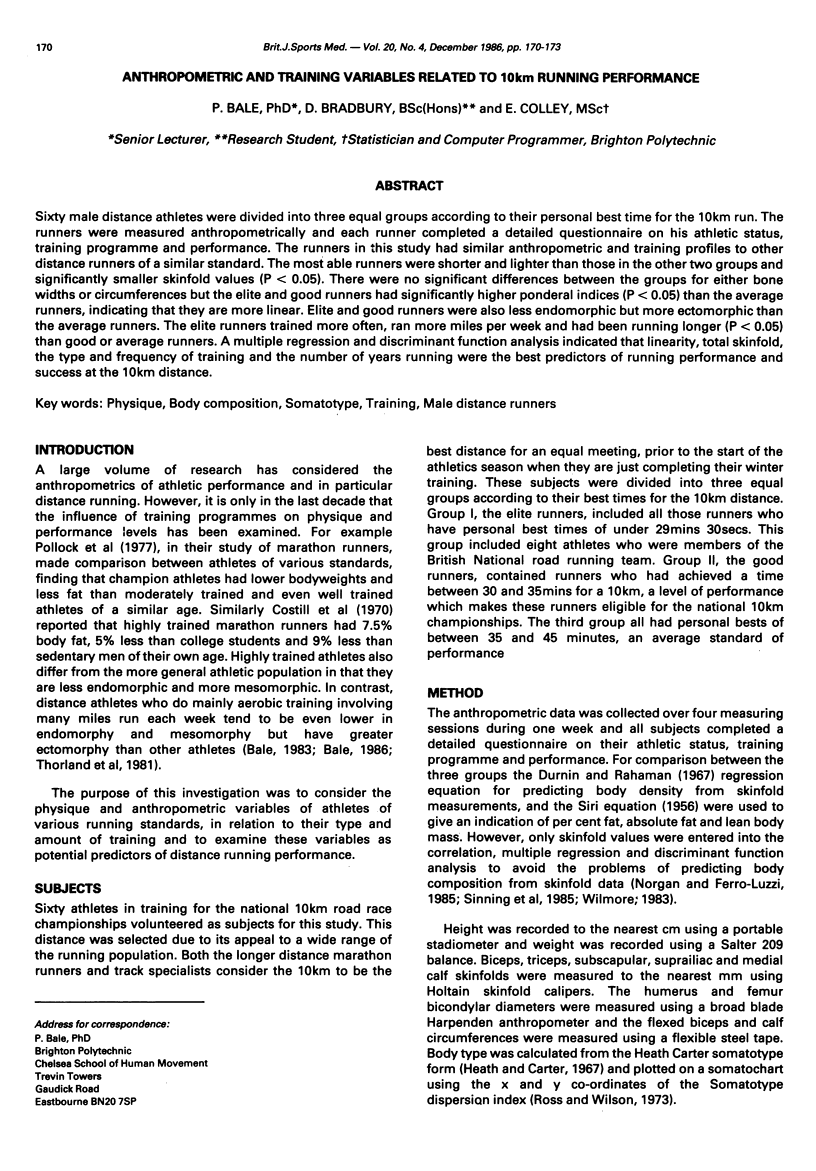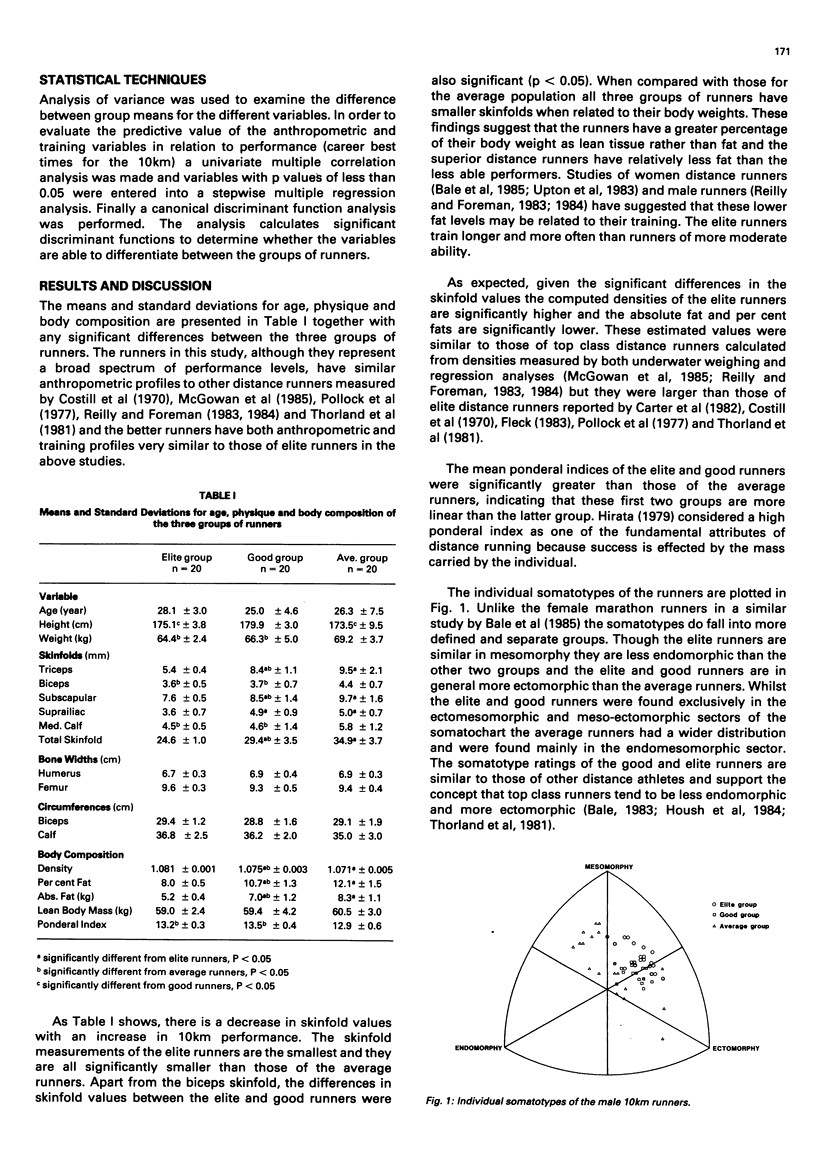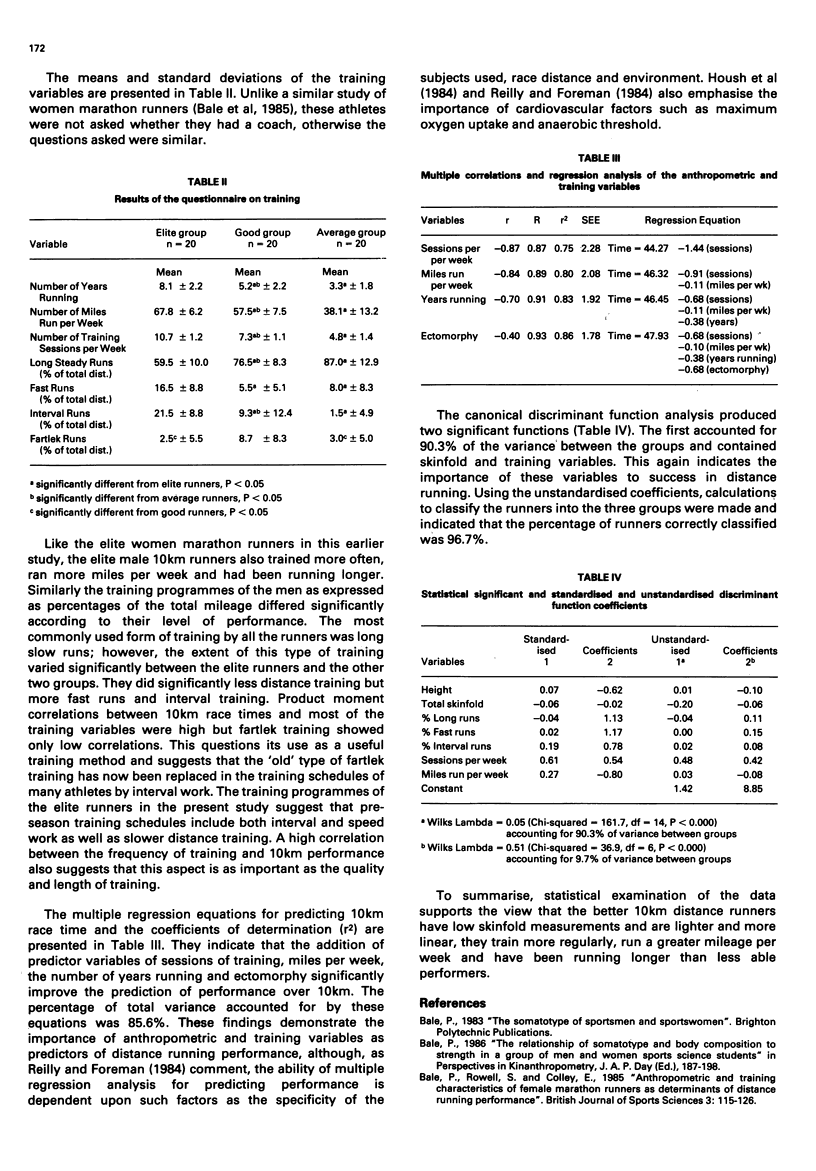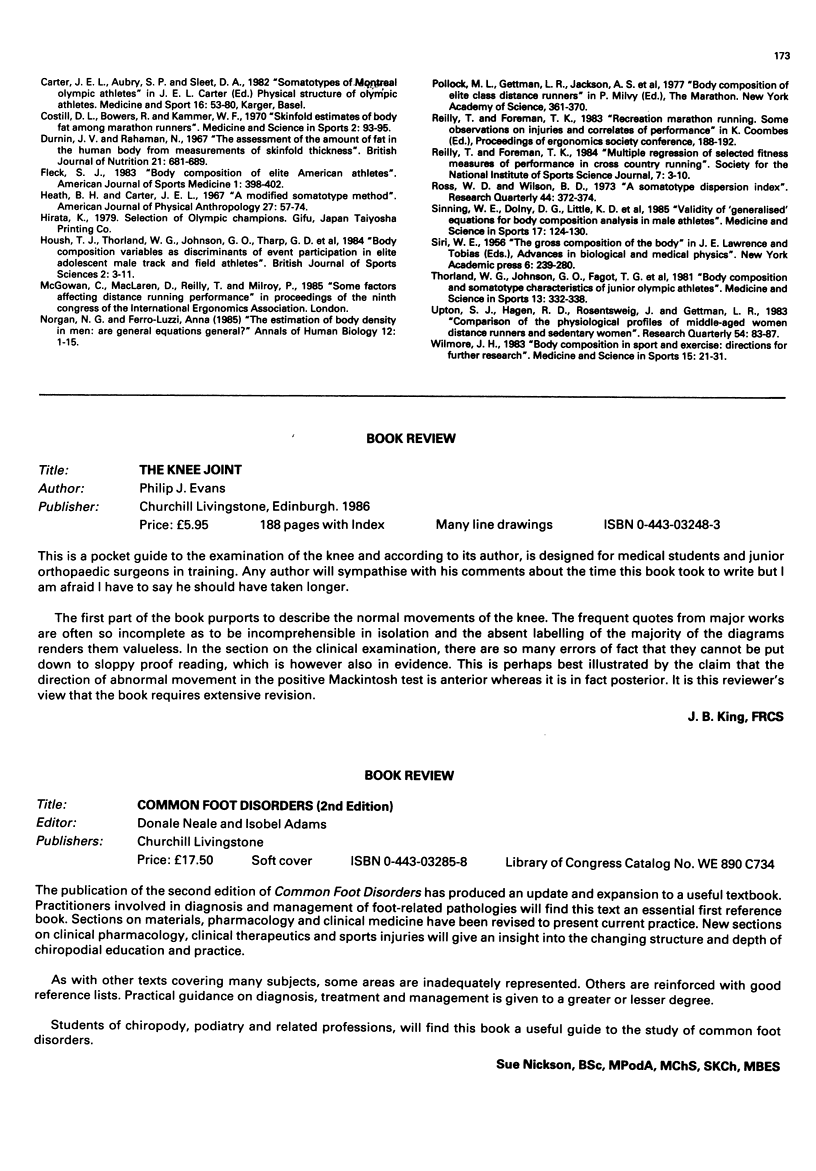Abstract
Sixty male distance athletes were divided into three equal groups according to their personal best time for the 10km run. The runners were measured anthropometrically and each runner completed a detailed questionnaire on his athletic status, training programme and performance. The runners in this study had similar anthropometric and training profiles to other distance runners of a similar standard. The most able runners were shorter and lighter than those in the other two groups and significantly smaller skinfold values (P less than 0.05). There were no significant differences between the groups for either bone widths or circumferences but the elite and good runners had significantly higher ponderal indices (P less than 0.05) than the average runners, indicating that they are more linear. Elite and good runners were also less endomorphic but more ectomorphic than the average runners. The elite runners trained more often, ran more miles per week and had been running longer (P less than 0.05) than good or average runners. A multiple regression and discriminant function analysis indicated that linearity, total skinfold, the type and frequency of training and the number of years running were the best predictors of running performance and success at the 10km distance.
Full text
PDF



Selected References
These references are in PubMed. This may not be the complete list of references from this article.
- Bale P., Rowell S., Colley E. Anthropometric and training characteristics of female marathon runners as determinants of distance running performance. J Sports Sci. 1985 Summer;3(2):115–126. doi: 10.1080/02640418508729741. [DOI] [PubMed] [Google Scholar]
- Costill D. L., Bowers R., Kammer W. F. Skinfold estimates of body fat among marathon runners. Med Sci Sports. 1970 Summer;2(2):93–95. [PubMed] [Google Scholar]
- Durnin J. V., Rahaman M. M. The assessment of the amount of fat in the human body from measurements of skinfold thickness. Br J Nutr. 1967 Aug;21(3):681–689. doi: 10.1079/bjn19670070. [DOI] [PubMed] [Google Scholar]
- Fleck S. J. Body composition of elite American athletes. Am J Sports Med. 1983 Nov-Dec;11(6):398–403. doi: 10.1177/036354658301100604. [DOI] [PubMed] [Google Scholar]
- Heath B. H., Carter J. E. A modified somatotype method. Am J Phys Anthropol. 1967 Jul;27(1):57–74. doi: 10.1002/ajpa.1330270108. [DOI] [PubMed] [Google Scholar]
- Norgan N. G., Ferro-Luzzi A. The estimation of body density in men: are general equations general? Ann Hum Biol. 1985 Jan-Feb;12(1):1–15. doi: 10.1080/03014468500007521. [DOI] [PubMed] [Google Scholar]
- Pollock M. L., Gettman L. R., Jackson A., Ayres J., Ward A., Linnerud A. C. Body composition of elite class distance runners. Ann N Y Acad Sci. 1977;301:361–370. doi: 10.1111/j.1749-6632.1977.tb38213.x. [DOI] [PubMed] [Google Scholar]
- Sinning W. E., Dolny D. G., Little K. D., Cunningham L. N., Racaniello A., Siconolfi S. F., Sholes J. L. Validity of "generalized" equations for body composition analysis in male athletes. Med Sci Sports Exerc. 1985 Feb;17(1):124–130. [PubMed] [Google Scholar]
- Thorland W. G., Johnson G. O., Fagot T. G., Tharp G. D., Hammer R. W. Body composition and somatotype characteristics of junior Olympic athletes. Med Sci Sports Exerc. 1981;13(5):332–338. [PubMed] [Google Scholar]
- Wilmore J. H. Body composition in sport and exercise: directions for future research. Med Sci Sports Exerc. 1983;15(1):21–31. [PubMed] [Google Scholar]


